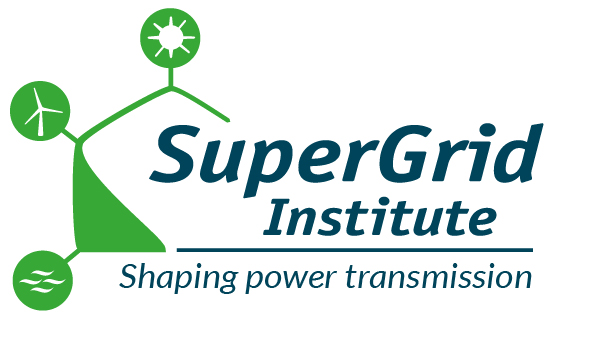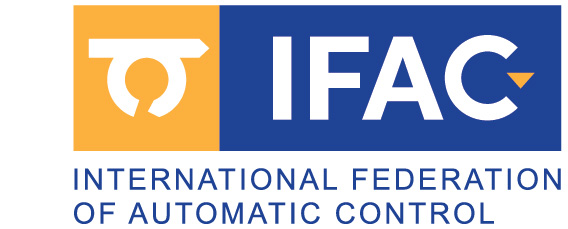FRIDAY 11 SEPTEMBER 2020 | 15:30 – 17:30
Summary: Several projects involving power electronic based equipment such as HVDC links, static VAR compensators and wind power plants have been decided by TSOs and build worldwide. In the long term, the share of power electronics connections into existing ac systems will significantly increase due to the massive penetration of wind power plants and HVDC links. For several years, the French TSO (Transmission System Operator) RTE, has been involved in innovative projects and R&D activities to model and study power electronic devices.
To support these activities, electromagnetic transient (EMT) tools offer detailed modeling HV components and controls while maintaining a good compromise between robustness, accuracy, and flexibility. The usage of EMT-type software to test new technical solutions and perform system studies is continuously increasing in importance. EMT simulation can be performed in offline and in real-time mode to meet different study objectives.
To cope with such challenges, some utilities (as RTE) have created real time (RT) simulation laboratories. The aim of real-time platform is to connect physical control and protection (C&P) replicas to the simulator in a hardware-in-the-loop (HIL) setup. Such approach provides additional features, accurate and reliable tool for long term studies. Nevertheless, as real-time simulation may entail simplifications to meet the real-time constraints, careful consideration shall therefore be given for validations. This tutorial describes the use of offline and real-time EMT simulation for system studies of HVDC link integrations in transmission system. Pros and cons of each EMT-type tools will be also addressed. Simulation of transient phenomena may require a representation of network and HVDC components valid for dc up to hundreds of kilohertz. Challenges and modeling methodologies will be presented during this tutorial.
In recent years, integration of HVDC links, have resulted in several stability problems in the power system. Interactions phenomena between VSC-HVDC converters and other power electronics devices or passive HV components installed on the network, can have a wide range of frequencies: from interarea oscillations, to sub-synchronous interaction (as SSRI and SSTI) and even to high frequency interaction (between 100Hz till several kHz). EMT-type tools is commonly used to study and investigate such interactions phenomena. This tutorial will provide an overview on interaction assessment related to VSC-HVDC links and practical experiences for real HVDC projects will be also presented.
Chairman: Hani SAAD, RTE, France
Schedule: 11th September 2020 – 2 hours session: 1 hour presentations and 1 hour panel discussion
Speaker:
Title and abstract:
Hani SAADNational Center of Grid Expertise, RTE, France
Parallel connection of IFA2000 and ELECINK links
- Interaction studies between HVDC-LCC and HVDC-VSC links
Kamran Sharifabadi EQUINOR Chief Engineer
Sebastien DENNETIERENational Center of Grid Expertise, RTE, France
Johan Sverdrup HVDC projects
- Parallel connection of 2 HVDC-VSC links in an islanded grid
Pierre RAULT National Center of Grid Expertise, RTE, France
BESTPATH Demo#2 R&D project
- Interoperability of multivendor HVDC Systems
Simon WENIG Strategic Network Planning, TransnetBW, Germany
Embedded HVDC projects in Germany
- Usage of EMT tools during different project phases
- The TransnetBW EMT roadmap to tackle upcoming challenges
Biographies:
Hani Saad (S’07) received his B.Sc. and Ph.D. degrees in electrical engineering from the Polytechnique of Montréal in 2007 and 2015, respectively. In 2015, he received the best Ph.D. thesis award from Polytechnic of Montreal. From 2008 to 2010 he worked at Techimp Spa. and in the Laboratory of Materials Engineering and High Voltages (LIMAT) of the University of Bologna on R&D activities. In 2013, he joined the French TSO RTE (Réseau de Transport d’Electricité), where he is currently involved in HVDC projects as a technical expert and in EMT studies. He is an active member in several Cigré B4 and C4 working groups.
Kamran Sharifabadi He received his M.Sc. degree in Electrical Power Engineering from NTH, Norway and Ph.D in Control Engineering from NTNU, Norway respectively in 1990 and 1993. Until 2001 he worked for ABB and Siemens. In 2001 he joined the Norwegian TSO, Statnett in network planning department with focus on HVDC projects. In 2011 he joined Equinor AS as expert in HVDC technologies and currently he keeps the position as Chief Engineer Electrical power systems in the company. He is an active member in several Cigré B4 working groups and convener of B4-81 Interaction between nearby VSC-HVDC converters, and senior member of IEEE.
Sebastien Dennetière graduated from École Supérieure d’Electricité (Supélec) France in 2002, he received his M.A.Sc. degree and phD degree from the École Polytechnique de Montréal in 2003 and 2017 respectively. From 2002 to 2004 he worked at IREQ (Hydro-Québec) on research and development activities related to the simulation and analysis of electromagnetic transients. From 2004 to 2009 he worked at the research center of EDF in the field of insulation coordination and power system simulations. In January 2010 he joined the French TSO RTE (Réseau de Transport d’Electricité) where he is currently involved in power system simulation and HVDC project as technical expert.
Pierre Rault received an electrical engineering Master degree from ENSE3 in 2009 then he obtained a Ph.D. degree at Ecole Centrale de Lille in 2014 in collaboration with RTE on the control of HVDC grids. He is currently working at RTE doing research on HVDC activities such as interoperability MMC and he also provides support for current RTE HVDC projects during tender and design stage. Currently, he is involved in Rte international activities to provide support on coordination and interoperability of parallel HVDC links. His field of expertise includes EMT offline and real-time simulations of HVDC systems.
Simon Wenig was born in Coburg, Germany, in 1985. He received the Dipl.-Ing. and Dr.-Ing. degree in electrical engineering from the Karlsruhe Institute of Technology, Karlsruhe, Germany, in 2013 and 2019, respectively. Since mid of 2018, he joined the transmission system operator TransnetBW in Stuttgart, Germany, where he is currently involved in several embedded HVDC and STATCOM projects. His research interests include EMT-type studies and tools, MMC controls and dynamic performance as well as power-quality and harmonic stability aspects related to future transmission grids. Dr. Wenig is a member of IEEE, VDE and is active in several international CIGRE working groups.






